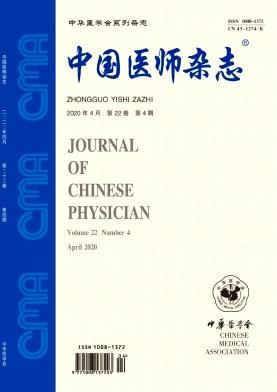Systematic review on the curative effect of total hip arthroplasty through direct anterior approach versus posterolateral Approach
Q4 Medicine
引用次数: 0
Abstract
Objective To systematic evaluate the curative effect of total hip arthroplasty (THA) through direct anterior approach versus (DAA) posterolateral approach (PSA). Methods All the randomized controlled trial (RCT) articles and observational research articles about the curative effect of THA through direct anterior approach (DAA group) versus posterolateral approach (PSA group)for treatment of hip disease that published at home and abroad included from database establishing to December 2017 were retrieved from Cochrane Library, Pubmed, Web of Science, CBM and China national knowledge internet (CNKI) through computer. The articles were screened and the information was extracted independently by two authors. A Meta-analysis was performed utilizing the RevMan 5.3 software. Results Two hundred and forty-nine articles were searched out in the initial stage. After screening, 7 Chinese articles and 2 English articles (942 cases)were included in the final analysis, including 8 RCT articles and 1 observational research article, and 463 patients in direct anterior approach and 479 patients in posterolateral approach. The results of Meta-analysis demonstrated that the incision length, operation time, intraoperative blood less, Harris hip function scores at 1 month after surgery, visual analogue scale (VAS) scores at 24 hours after surgery, postoperative bed rest time and the hospital stay were better in DAA group compared to PSA group (SMD=-2.51, 95% CI: -4.84, -0.19, P=0.03); (SMD=0.84, 95% CI: 0.10, 1.59, P=0.03); (SMD=-1.52, 95% CI: -2.98, -0.05, P=0.04); (SMD=2.58, 95% CI: 0.65, 4.51, P=0.009); (SMD=-0.65, 95% CI: -0.91, -0.38, P<0.01); (SMD=-1.85, 95% CI: -3.00, -0.70, P=0.002); (SMD=-1.12, 95% CI: -1.62, -0.61, P<0.01). There were no statistical difference in drainage (SMD=-1.45, 95% CI: -3.40, 0.49, P=0.14), Harris hip function scores at last follow-up (SMD=0.91, 95% CI: -0.31, 2.14, P=0.15), VAS scores at 48 hours after surgery (SMD=-1.21, 95% CI: -3.03, 0.61, P=0.19), acetabular anteversion angles (SMD=-0.50, 95% CI: -1.06, 0.05, P=0.07), acetabular abduction angles (SMD=-0.01, 95% CI: -0.32, 0.30, P=0.97) and incidence of complications (OR=1.10, 95% CI: 0.59, 2.07, P=0.77) between the 2 groups. The result of analysis of publication bias according to Harris hip function scores at last follow-up and incidence of complications showed that the funnel-plot was essentially bilateral symmetry. Conclusions THA through DAA can significantly reduce the soft-tissue damage, and it is beneficial for patient's quick recovery, also it conforms to the current concept of minimally invasive treatment that worthy of promotion. Key words: Arthroplasty, replacement, hip; Meta-analysis全髋关节置换术直接前路与后外侧入路疗效的系统评价
目的系统评价全髋关节置换术(THA)直接前路入路与后外侧入路(PSA)的疗效。方法从Cochrane Library、Pubmed、Web of Science、CBM、中国知网(CNKI)等数据库中,通过计算机检索建立数据库至2017年12月为止国内外发表的关于THA经直接前路入路(DAA组)与后外侧入路(PSA组)治疗髋关节病疗效的随机对照试验(RCT)和观察性研究文章。文章经过筛选,信息由两位作者独立提取。采用RevMan 5.3软件进行meta分析。结果初步检索到文献249篇。经筛选,最终纳入中文文献7篇,英文文献2篇(942例),其中RCT文献8篇,观察性研究文献1篇,直接前路入路463例,后外侧入路479例。meta分析结果显示,DAA组在切口长度、手术时间、术中出血量、术后1个月Harris髋关节功能评分、术后24小时VAS评分、术后卧床休息时间、住院时间等方面均优于PSA组(SMD=-2.51, 95% CI: -4.84, -0.19, P=0.03);(smd =0.84, 95% ci: 0.10, 1.59, p =0.03);(smd =-1.52, 95% ci: -2.98, -0.05, p =0.04);(smd =2.58, 95% ci: 0.65, 4.51, p =0.009);(smd =-0.65, 95% ci: -0.91, -0.38, p <0.01);(smd =-1.85, 95% ci: -3.00, -0.70, p =0.002);(smd =-1.12, 95% ci: -1.62, -0.61, p <0.01)。两组患者在引流(SMD=-1.45, 95% CI: -3.40, 0.49, P=0.14)、末次随访Harris髋关节功能评分(SMD=0.91, 95% CI: -0.31, 2.14, P=0.15)、术后48 h VAS评分(SMD=-1.21, 95% CI: -3.03, 0.61, P=0.19)、髋臼前倾角(SMD=-0.50, 95% CI: -1.06, 0.05, P=0.07)、髋臼外倾角(SMD=-0.01, 95% CI: -0.32, 0.30, P=0.97)、并发症发生率(OR=1.10, 95% CI: 0.59, 2.07, P=0.77)方面均无统计学差异。根据Harris髋关节功能评分和并发症发生率进行发表偏倚分析结果显示,漏斗图基本为双侧对称。结论经DAA THA可明显减轻软组织损伤,有利于患者快速康复,符合当前微创治疗理念,值得推广。关键词:髋关节置换术;荟萃分析
本文章由计算机程序翻译,如有差异,请以英文原文为准。
求助全文
约1分钟内获得全文
求助全文

 求助内容:
求助内容: 应助结果提醒方式:
应助结果提醒方式:


